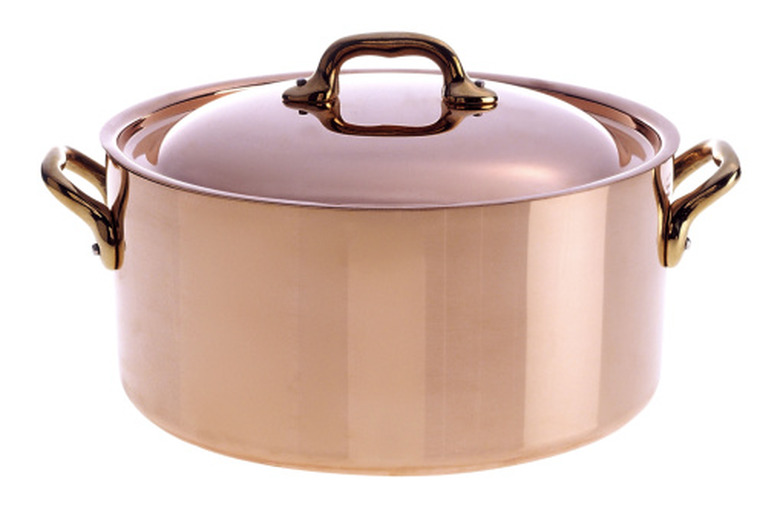How To Change The Color Of Metal Surfaces
Depending on what "look" you want to achieve, you can try a variety of ways to change the color of your metal surface. Usually different levels of oxidization can occur on your metal's surface based on the method you are using and the metal involved. When changing your metal's surface color, protect your hands from any chemicals with which you are working. Work in a well-ventilated area so that chemical and paint fumes will not be a danger.
Step 1
Set your metal on a baking sheet. Use a heat gun to apply high-powered heat to your metal until it changes color. This method usually works best on such metals as copper, titanium and steel. For example, heat applied to copper can change its brassy orange finish to a dull red, purple or bluish white. Allow your metal to completely cool before handling it.
Step 2
Paint on your metal with special metal paint using a paintbrush or paint sponge. Painting directly on your metal's surface will change the color of your metal cosmetically, but it will remain the same color underneath your paint layers. Metal paint comes in various colors, from white and black, to green and burnt sienna.
Step 3
Apply a colored metal wax to your metal's surface using a rag. Wear plastic gloves during application. Allow the wax to dry completely before handling your object. Metal waxes, which can be purchased at hardware and craft stores, usually come in paste form; they give the metal an oxidized look similar to heat application.
Step 4
Leave your metal in an area where it is exposed to fresh air and elements such as heat, moisture and pollution. Over time, this exposure can oxidize your metal and create a patina on its surface, usually of a greenish-brown color. This method works best on metals such as bronze, copper and pewter.
Step 5
Apply patina product with a paintbrush to your metal's surface to speed up the oxidization process artificially. Allow the oxidization process to take effect, usually within a few hours. Allow the metal to become completely dry before you handle it.
Things Needed
- Baking sheet
- Heat gun
- Metal paint
- Paintbrush
- Paint sponge
- Metal wax
- Rag
- Plastic gloves
- Patina product
Cite This Article
MLA
Vogt, Crystal. "How To Change The Color Of Metal Surfaces" sciencing.com, https://www.sciencing.com/change-color-metal-surfaces-8584080/. 24 April 2017.
APA
Vogt, Crystal. (2017, April 24). How To Change The Color Of Metal Surfaces. sciencing.com. Retrieved from https://www.sciencing.com/change-color-metal-surfaces-8584080/
Chicago
Vogt, Crystal. How To Change The Color Of Metal Surfaces last modified March 24, 2022. https://www.sciencing.com/change-color-metal-surfaces-8584080/
